The following is a list of burial places of Ottoman sultans in Istanbul, Turkey. [1]
| Portrait | Monarch | Date and place of death | Burial | Image |
|---|---|---|---|---|
 | Osman I (r. 1299–1324) | 1324 (aged 68–70) | Tomb of Osman Gazi, Bursa, Turkey |  |
 | Orhan (r. 1324–1362) | March 1362 (aged 80–81) | Tomb of Orhan Gazi, Bursa, Turkey |  |
 | Murad I (r. 1362–1389) | 15/28 June 1389 (aged 62–63) | Tomb of Sultan Murad, Bursa, Turkey |  |
 | Bayezid I (r. 1389–1402) | 8 March 1403 (aged 42–43) | Tomb of Yıldırım Bayezid, Bursa, Turkey |  |
 | Mehmed I (r. 1413–1421) | 26 May 1421 (aged 34–35) | Green Tomb, Bursa, Turkey |  |
 | Murad II (r. 1421–1444) & (r. 1446–1451) | 3 February 1451 (aged 46) | Muradiye Complex, Bursa, Turkey |  |
 | Mehmed II (r. 1444–1446) & (r. 1451–1481) | 3 May 1481 (aged 49) | Fatih Mosque, Istanbul, Turkey |  |
 | Bayezid II (r. 1481–1512) | 26 May 1512 (aged 64) | Bayezid II Mosque, Istanbul, Turkey |  |
 | Selim I (r. 1512–1520) | 22 September 1520 (aged 49) | Yavuz Selim Mosque, Istanbul, Turkey |  |
 | Suleiman I (r. 1520–1566) | 7 September 1566 (aged 71) | Süleymaniye Mosque, Istanbul, Turkey |  |
 | Selim II (r. 1566–1574) | 15 December 1574 (aged 50) | Hagia Sophia, Istanbul, Turkey |  |
 | Murad III (r. 1574–1595) | 16 January 1595 (aged 48) |  | |
 | Mehmed III (r. 1595–1603) | 22 December 1603 (aged 37) |  | |
 | Ahmed I (r. 1603–1617) | 22 November 1617 (aged 27) | Blue Mosque, Istanbul, Turkey |  |
 | Mustafa I (r. 1617–1618) & (r. 1622–1623) | 20 January 1639 (aged 48) | Hagia Sophia, Istanbul, Turkey |  |
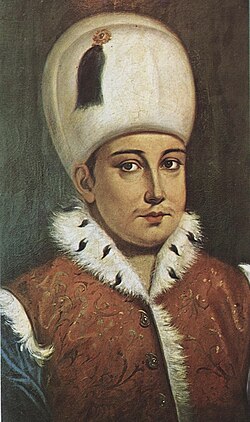 | Osman II (r. 1618–1622) | 20 May 1622 (aged 17) | Blue Mosque, Istanbul, Turkey |  |
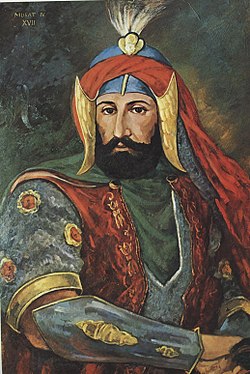 | Murad IV (r. 1623–1640) | 8 February 1640 (aged 27) |  | |
 | Ibrahim (r. 1640–1648) | 18 August 1648 (aged 32) | Hagia Sophia, Istanbul, Turkey |  |
 | Mehmed IV (r. 1648–1687) | 6 January 1693 (aged 51) | Tomb of Turhan Sultan, New Mosque, Istanbul, Turkey |  |
 | Suleiman II (r. 1687–1691) | 22 June 1691 (aged 49) | Süleymaniye Mosque, Istanbul, Turkey |  |
 | Ahmed II (r. 1691–1695) | 6 February 1695 (aged 51) | ||
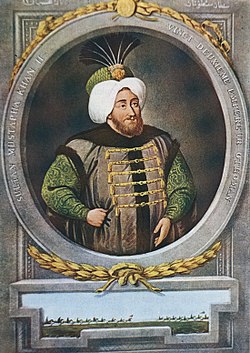 | Mustafa II (r. 1695–1703) | 29 December 1703 (aged 39) | Tomb of Turhan Sultan, New Mosque, Istanbul, Turkey |  |
 | Ahmed III (r. 1703–1730) | 1 July 1736 (aged 62) | ||
 | Mahmud I (r. 1730–1754) | 13 December 1754 (aged 58) | ||
 | Osman III (r. 1754–1757) | 30 October 1757 (aged 58) | ||
 | Mustafa III (r. 1757–1774) | 21 January 1774 (aged 56) | Laleli Mosque, Istanbul, Turkey |  |
 | Abdul Hamid I (r. 1774–1789) | 7 April 1789 (aged 64) | Tomb of Abdul Hamid I, Istanbul, Turkey |  |
 | Selim III (r. 1789–1807) | 28 July 1808 (aged 46) | Laleli Mosque, Istanbul, Turkey |  |
 | Mustafa IV (r. 1807–1808) | 16 November 1808 (aged 29) | Tomb of Abdul Hamid I, Istanbul, Turkey |  |
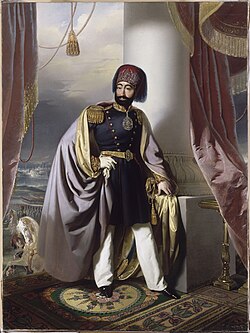 | Mahmud II (r. 1808–1839) | 1 July 1839 (aged 53) | Tomb of Mahmud II, Istanbul, Turkey |  |
 | Abdülmecid I (r. 1839–1861) | 25 June 1861 (aged 38) | Yavuz Selim Mosque, Istanbul, Turkey |  |
 | Abdulaziz (r. 1861–1876) | 4 June 1876 (aged 46) | Tomb of Mahmud II, Istanbul, Turkey |  |
 | Murad V (1876) | 29 August 1904 (aged 63) | Tomb of Turhan Sultan, New Mosque, Istanbul, Turkey |  |
 | Abdul Hamid II (r. 1876–1909) | 10 February 1918 (aged 75) | Tomb of Mahmud II, Istanbul, Turkey |  |
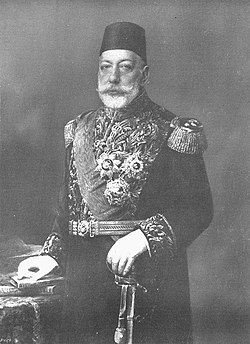 | Mehmed V (r. 1909–1918) | 3 July 1918 (aged 73) | Tomb of Sultan Reşad, Istanbul, Turkey |  |
 | Mehmed VI (r. 1918–1922) | 16 May 1926 (aged 65) | Sulaymaniyya Takiyya, Damascus, Syria |  |